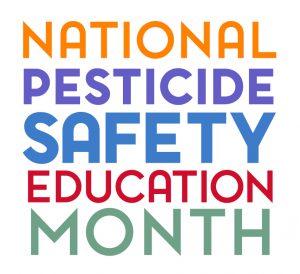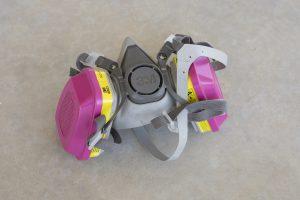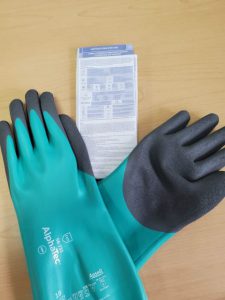 Have you checked your PPE kit lately? In honor of pesticide safety month, here is a reminder to go through and check your PPE kit – particularly the items you don’t use very often. Checking your PPE frequently will help ensure that you know How to Maintain PPE so it can always protect you.
Have you checked your PPE kit lately? In honor of pesticide safety month, here is a reminder to go through and check your PPE kit – particularly the items you don’t use very often. Checking your PPE frequently will help ensure that you know How to Maintain PPE so it can always protect you.
It is common practice for applicator crews to carry all their needed PPE in a tote or crate with a lid. This allows the supplies to be easily moved and transferred from job to job, while providing assurance that they will have access to most anything they might need. But, having everything in one place so you never have to think about it also means that you never think about what’s in the box. When was the last time you pulled all your PPE to make sure it is clean and functional?
Gloves 
Do you wear re-usable gloves? If so, when was the last time you checked them for cracks, rips, or holes? You can do this by trapping air in the glove, then rolling it closed from the top toward the fingers. If the glove puffs up and holds air under pressure, you can be assured that the gloves are still functional and fit for use. However, if they are becoming brittle or showing signs wear, you should consider replacing them. It is always better to be safe than sorry.
Safety glasses

A good pair of comfortable and protective safety glasses should be worn on essentially every job. There are dozens of companies that sell hundreds of brands, often for less than $10/pair. Although these should be worn multiple times and stored with care, at some level they are disposable. So inspect these frequently and replace any that are scratched, chipped, or missing parts. If safety glasses impede vision or are uncomfortable, the applicator will be tempted to not wear them. Your eyes are too important to put them at risk simply because a pair of glasses is old and frustrating to wear.
Respirators

Outside the world of fumigation, few operations require the regular use of respirators. However, almost all applicators will periodically find themselves in situations where a respirator is necessary. So when the need arises, your equipment needs to be functional and ready to use. But there’s a catch. If stored improperly, cartridges can expire and lose their ability to filter air. If this occurs, respirator is providing no protection.
Now is the time to check your respirators and make sure they are being stored according to manufacturer instructions. Since cartridges have a defined lifespan, keep accurate records of when cartridges were last installed and when they should be replaced. Lastly, make sure you are carrying a supply of fresh cartridges that are sealed in their original packaging.
General cleaning
At the end of every day, applicators should clean their PPE before returning the items to the kit. But, have you ever been in a hurry or forgot to do the final cleaning? It is ok to admit it, we have all done this. But when contaminated safety gear goes back into your PPE box, it can contaminate all the clean items. So, we recommend that you take time to remove all items from your box and lay them out. After inspecting for quality and making a list of what to replace, you should wash all the remaining items as well as the inside and outside of the box itself. After everything has dried and been repacked, you can have full confidence that every part of your kit is either new or clean. Attention to these seemingly minor details is what will ultimately define you as a true professional.
Personal protective equipment is the backbone of properly reducing exposure and your risk while working with pesticides. Your PPE can only be effective if you know How to Maintain Your PPE. Following a few of the simple things we have discussed and taking the time to be deliberate with your PPE can make a HUGE difference. This is Pesticide Safety Education Awareness Month, so if you learn nothing else learn that being AWARE that safety matters is a great start.
Click To Subscribe
 1
1

